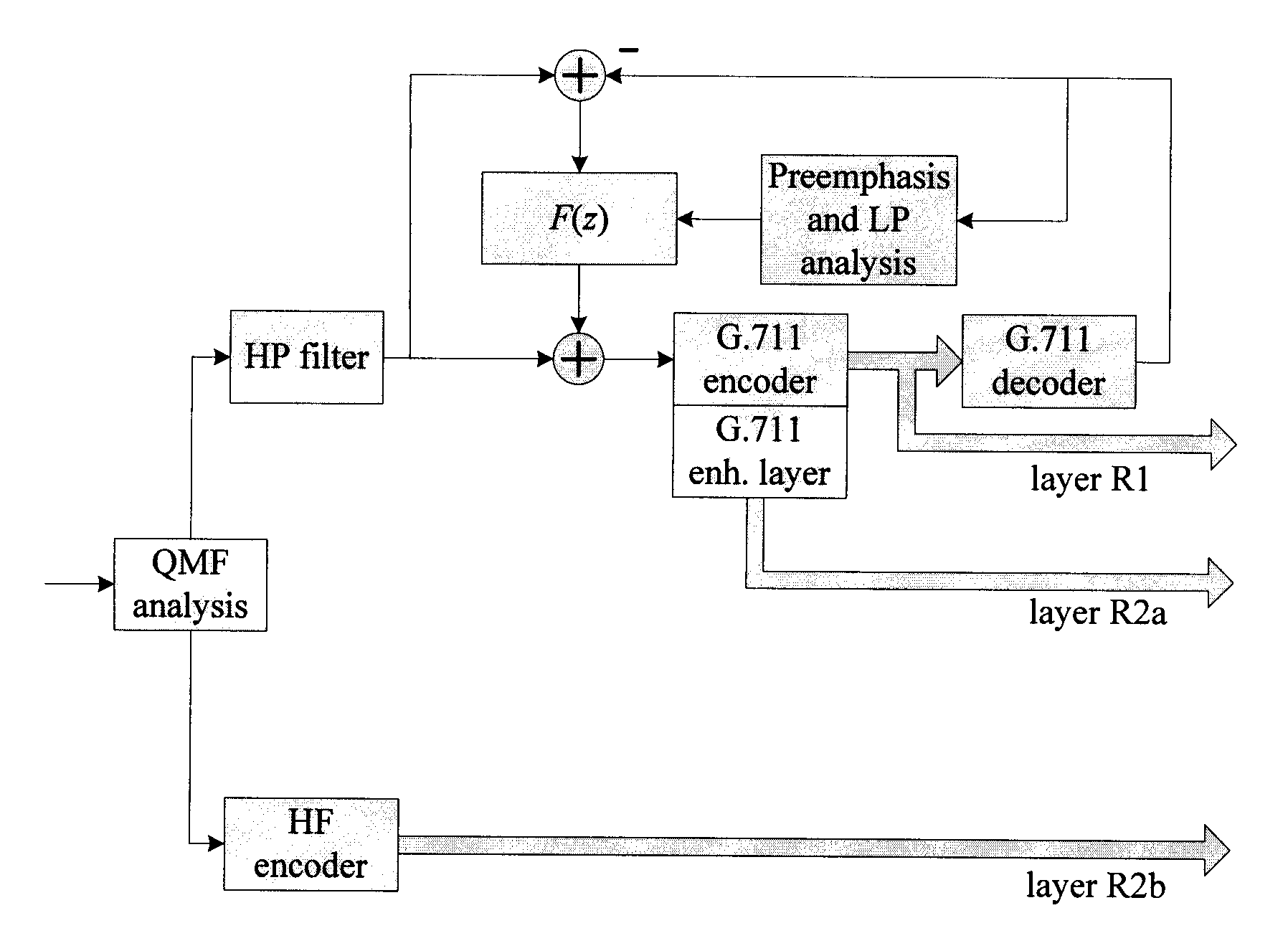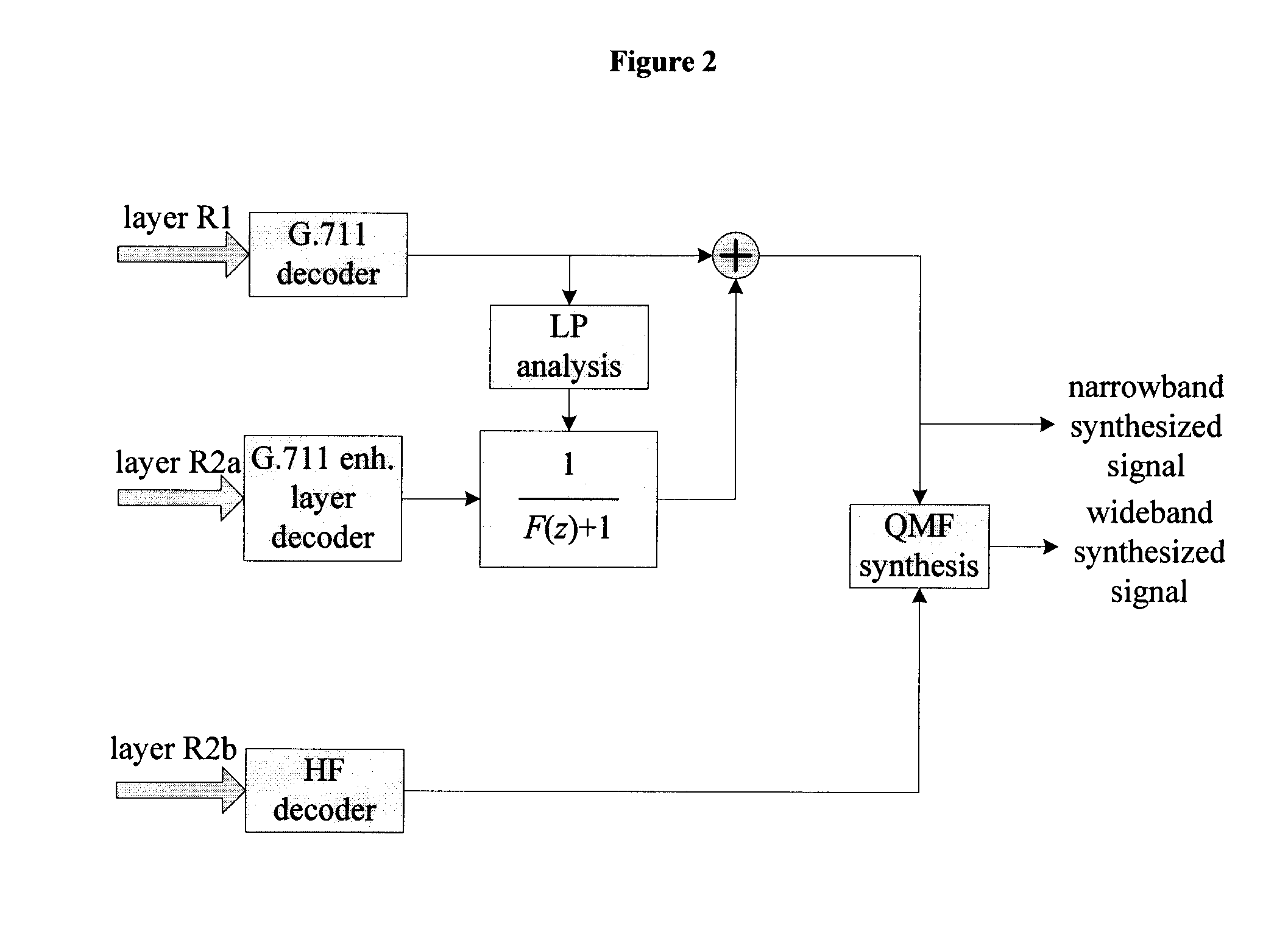Device and Method for Noise Shaping in a Multilayer Embedded Codec Interoperable with the ITU-T G.711 Standard
a multi-layer embedded codec and noise shaping technology, applied in the field of multi-layer embedded codecs, can solve the problems of unnecessarily high bit rate and extra complexity, annoying and audible quantization noise, and inability to synthesize wideband signals
- Summary
- Abstract
- Description
- Claims
- Application Information
AI Technical Summary
Benefits of technology
Problems solved by technology
Method used
Image
Examples
Embodiment Construction
[0038]Generally stated, a first non-restrictive illustrative embodiment of the present invention allows for encoding the lower-band signal with significantly improved quality than would be obtained using only the legacy G.711 codec. The idea behind the disclosed, first non-restrictive illustrative embodiment is to shape the G.711 residual noise according to some perceptual criteria and masking effects so that this residual noise is far less annoying for listeners. The disclosed device and method are applied in the encoder and it does not affect interoperability with G.711. More specifically, the part of the encoded bitstream corresponding to Layer 1 can be decoded by a legacy G.711 decoder with increased quality due to proper noise shaping. The disclosed device and method also provide a mechanism to shape the quantization noise when decoding both Layer 1 and Layer 2. This is accomplished by introducing a complementary part of the noise shaping device and method also in the decoder w...
PUM
 Login to View More
Login to View More Abstract
Description
Claims
Application Information
 Login to View More
Login to View More - R&D
- Intellectual Property
- Life Sciences
- Materials
- Tech Scout
- Unparalleled Data Quality
- Higher Quality Content
- 60% Fewer Hallucinations
Browse by: Latest US Patents, China's latest patents, Technical Efficacy Thesaurus, Application Domain, Technology Topic, Popular Technical Reports.
© 2025 PatSnap. All rights reserved.Legal|Privacy policy|Modern Slavery Act Transparency Statement|Sitemap|About US| Contact US: help@patsnap.com



